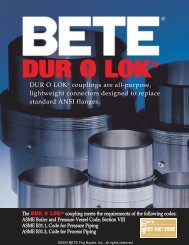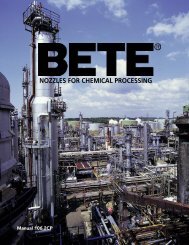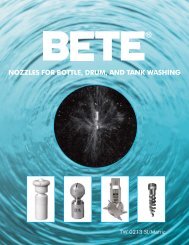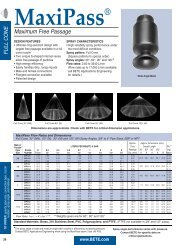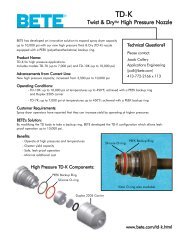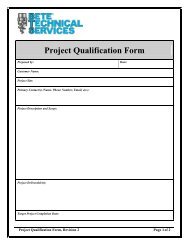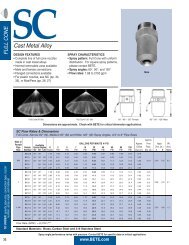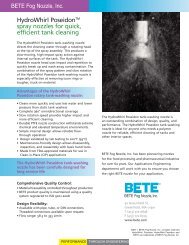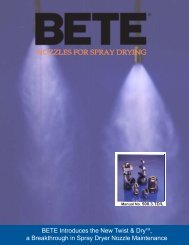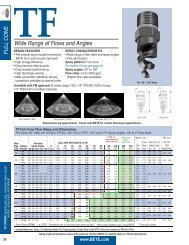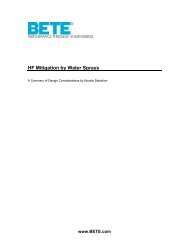Spray Gas Quench Design Considerations - BETE Fog Nozzle, Inc.
Spray Gas Quench Design Considerations - BETE Fog Nozzle, Inc.
Spray Gas Quench Design Considerations - BETE Fog Nozzle, Inc.
- No tags were found...
Create successful ePaper yourself
Turn your PDF publications into a flip-book with our unique Google optimized e-Paper software.
Symbol Variable Unitsθ Evaporation time Sρl Density of drop (liquid) Kg/m3λ Heat of vaporization of liquid J/kgD0 Drop diameter, initial, t = 0 Mkg Thermal conductivity J/m s KT Log mean temperature difference Kbetween drop and gasPenetration and dispersion of the liquiddrops into the gas stream is essential tomaximize the evaporation rate and theuniformity of the cooling. The spraypattern in process applications narrowsas the gas velocity increases. Figure 2shows the effect of gas velocity on thespray width of various drop sizes. Highgas density (elevated pressure and gascomposition) and high gas velocitydramatically reduce the spray angle.Under extreme conditions a spray cancollapse, resulting in limited dispersion ofthe drops into the gas stream. Therefore,drop trajectory calculations are essentialto assure the design will provide sufficientdrop penetration into the gas steam.Figure 2A. 2.5 m/s gas velocity.<strong>Gas</strong> velocity impact on drop trajectory with 45 psi nozzle pressure dropand 90 degree cone angle spray for 300 (red), 100 (blue) and 30 (black)micron drop diameters.2PERFORMANCE THROUGH ENGINEERING



